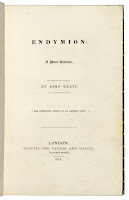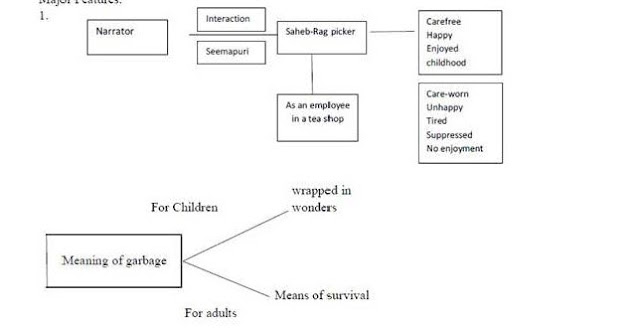A Thing Of Beauty (Summary & Critical Analysis)
‘A Thing of Beauty’, - A Critical Analysis
The excerpt, A Thing of Beauty by John Keats, taken from a larger poem, 'Endymion: A Poetic Romance,' is written in the Romantic style of writing. 'A Thing of Beauty' romanticizes beauty as something that has the ability to transform lives. Romanticizing is about investing objects with larger than life attributes, it is about extolling the virtues of an object - it could be any object, the poet's beloved, nature, beauty (in the case of this extract) - anything that has impacted the mind of the poet. Often, the poet might be compelled to write about an actual incident, like for example, in the poem, 'Daffodils', Wordsworth describes how one incident left a lasting impression on his mind. The sight of Daffodils dancing in the wind becomes a memory to fall back on when the poet, feels low at heart.
Some of the important aspects of the poem are listed below:
1.Genre/Style of Writing:
A Thing of Beauty belongs to the Romantic Genre. First published in 1818, the poem, A Thing of Beauty is written in rhyming couplets and the rhyme scheme employed is aa, bb. The poet has used the iambic pentameter in the poem.
2. Theme:
a) The central theme of the poem revolves around beauty in all its forms - Earthly beauty and Spiritual beauty. The poet talks about how important beauty is for all of us. He highlights the transformational, therapeutic and spiritual impact of beauty on our lives. The poet describes how beauty can be found everywhere. Wordsworth suggests that beauty has a therapeutic quality, the ability to cure and heal troubled minds, and bodies.
b) The poet’s message is that Beauty has the ability to transform lives, it can dispel negativism and dark thoughts. Beauty can also remove the sting from grief, it can help one survive even when there is a ‘dearth of noble natures’ or when one is surrounded by hostile and malicious people. Beauty has a positive impact on one’s health, it can help steady the breathing, and can give one a sound sleep. John Keats suggests that beauty can be found everywhere in life; as such he draws a list of beautiful things which include: the sun, the moon, trees, daffodils, musk rose blooms, simple sheep and beauty can also be found in the stories of the bravery, courage, and sacrifice shown by people who were not afraid to die for a greater cause. One warning, however, is that one should not get enthralled by earthly beauty lest one blinded to the Spiritual beauty behind it. Wordsworth expresses the idea of beauty being spiritual in nature and that the ultimate goal of appreciating beauty should be to appreciate God who created beautiful things for us. Keats suggests that beauty has a spiritual source when he implies that it flows from ‘An endless fountain’ in heaven, beauty thus, is a spiritual drink, an ‘immortal drink’ made especially for all mankind.
3. Important Figures of Speech and images metaphors
a) Metaphors and Symbols: The poet has made liberal use of metaphors and symbols in the poem. The list of beautiful things themselves are metaphors and symbols for beauty. The fountain in heaven is a metaphor for the source of spiritual beauty. The ‘flowery band’ is a metaphor for earthly beauty which is entrapping, mesmerizing, and infatuating, as in enslaving, thus one should beware of the ‘flowery band’ lest we should be trapped in it. The ‘grandeur of the dooms’ of the ‘mighty dead’ is a metaphor for bravery, sacrifice, and selflessness, all stories true and made up, beautiful stories too!
b) Imagery: The poem contains a powerful image of earthly beauty in the lines, ‘are we wreathing A flowery band to bind us to the earth’. This is an image that creates a picture of the universal beauty, a band, however, that traps us to the earth. The warning is implicit in the image itself, and the words, ‘flowery band’ contain a paradox, a conceit in so far that we don’t associate flowers with ‘band’ where the latter creates a sense of being bound, tied, or subject to restrictions. A Thing of Beauty is full of sensory images, and one can almost feel and smell them. these include, ‘shady boon’ which creates a sense of comfort and respite on a hot summer afternoon, and so does the description of the ‘clear rills’ that ‘a cooling covert make’. The description of the ‘sprinkling of fair musk rose blooms’ in the middle of a clearing in the forest provides a rich feast of colors for the eyes!
4. The Aesthetics of Beauty Keats describes beauty, as something that ‘is a joy forever’ or that ‘Its loveliness increases, or even that, ‘it will never Pass into nothingness’ then what he is doing in effect is to tell the reader that he is talking about universal beauty that transcends time itself. He is expounding the Philosophy of Aesthetics in an attempt to describe what constitutes beauty itself.
5. Making connections between lessons with the same themes For students of grade twelve following the CBSE board, it would be a good idea for them to recall the poem, 'Daffodils' by Wordsworth which they would have read in grade eight. The poem, Daffodils carries the same theme as A Thing of Beauty. It is wonderful how a single instance of watching the Daffodils dancing in the breeze can have such a powerful impact on the poet, Wordsworth in that poem has a treasure trove to which he can fall back to when he is alone and low at heart! Another lesson that talks about beauty although of a different kind is The Portrait of a Lady, a lesson in grade eleven in which Khushwant Singh attempts to bring out the inner beauty of his Grandmother who was beautiful in spite of the fact that her face was crisscrossed with wrinkles and she walked with a stoop, (but then that was written as a prose piece and not a poem). A common strand that links A Thing of Beauty, Daffodils, and the Prose piece, Portrait of a Lady is that they all talk about the transforming power of Beauty. Beauty is a magical drink that has the ability to transform lives, thoughts, and health!


